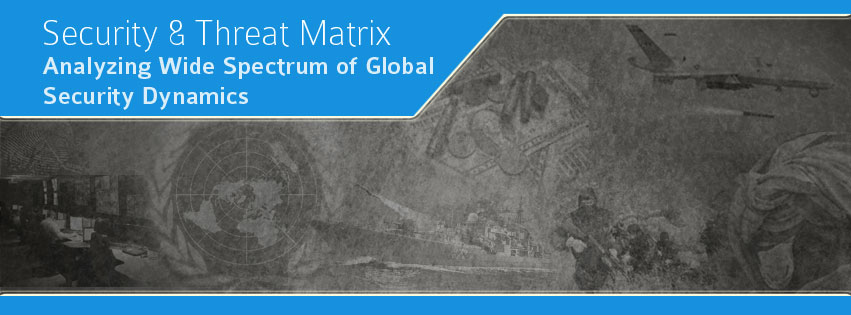By Shahzad Masood Roomi
"We need a collective defence where Allied forces are more ready to deploy.
And better able to reinforce each other.
Faster.
Sharper.
And more mobile.
We must be able to deter any threat, from any direction. Including hybrid warfare, and attacks that are aimed at our infrastructure -- our economies -- and our open societies.
This requires resolve.
And resources.
We have shown the resolve.
We are fundamentally changing NATO’s defence posture. To ensure we have the right forces -- in the right place -- at the right time."
This is an excerpt from speech of NATO Secretary General Jens Stoltenberg at the 51st Munich Security Conference, held from 6-8 Feb. in Munich, Germany. Complete text of his speech is available on official site on following link:
http://www.nato.int/cps/en/natohq/opinions_117320.htm?selectedLocale=en
ANALYSIS:
Now when the NATO has officially accepted that age of Hybrid Warfare is here and have announced critical steps to combat the percieved threats from Russian Hybrid strategy. There are two aspects of his speech which demand a critical analysis.- As a response strategy, Mr, Stoltenberg has told that NATO has prescribed the establishment of a "spearhead Force".
- NATO has decided to established first command and control units in six eastern Allies: Bulgaria, Estonia, Latvia, Lithuania, Poland, and Romania on war footings these units are ought to provide support to rapid deployment of spearhead force along with regular NATO troops.
- Physical Conflict zone & its population;
- Home front (Own Population)
- International community.
But question, remains why NATO considers Russian threats as 'Hybrid' in the first place? Latest reference to Russian overtures being Hybrid was made by former NATO secretary general Andres Fogh Rasmussen, who warned that "Russia may use "hybrid war" methods in Baltics to test NATO solidarity" while giving an interview to a UK daily. "There is a high probability that he will intervene in the Baltics to test NATO's Article 5," Rasmussen said during the interview while referring to the solidarity clause of the North Atlantic Treaty that underpins collective security. Interestingly, the above mentioned speech of current NATO secretary general also contains the reference to Hybrid nature of Russian threat in almost same sense. Intrinsic problem with NATO's kinetic strategy is that it is devoid of any approach to address the real target of Russian hybrid war i.e. "Solidarity" within NATO. Fear of Red Bear may work for sometime, but with a growing Euro-Zone crisis, asking for more defense funds and spending, making more aggressive military oriented strategies and inability to finish ongoing conflicts will eventually damage NATO's solidarity as Putin has in his mind.
In NATO not all the nations have luxury of spending more on defense right now and this new Kinetic strategy is certainly going to put lots of pressure on stable European economies like Germany and France. By looking at this strategy it seems that NATO perceived Russian hybrid threats posed to 'Sovereignty' of EU instead of 'Solidarity' of its defense alliance which guards European sovereignty but once its solidarity compromised, many East European nations will be 'hoping' for peace. Putin's timing of igniting Ukraine is also an intriguing aspect of this whole crisis. Prolonged economic crisis of Europe, shortness of resources due to budgetary cuts on defense in EU and psychological stress of prolonged deployment in war zones of Afghanistan and other parts are being masterly exploited by Putin and NATO's response is more military oriented that is going to exacerbate all of these nuisances within Europe and at the same time provoking Russia even more with deployment of forces in Baltics and Russian neighbors. This is not how an alliance keeps its solidarity intact, this is how an alliance prepare for a war. If NATO is doing so. Someone there must go through history to all the Western invaders who entered the Russia in the past. And this is the point when many of the European states would start to look at their own interest irrespective to what NATO wants. And this is exactly what Putin is striving for!





No comments:
Post a Comment